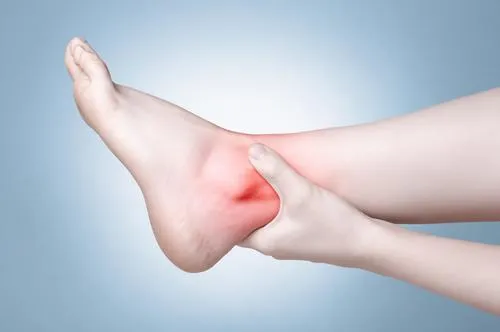
How Chiropractic Helps Resolve Ankle Pain
Ankle pain and injury are not issues reserved solely for athletes. In the United States, more than 25,000 people deal with ankle sprains or pain every day. Studies show that somewhere around 40 percent of ankle sprains are not treated correctly or are misdiagnosed, which leads to disability or chronic ankle pain.
When the ankle does not function properly, it can affect the entire body. The muscles on either side of the leg or even under the foot can become sore or painful. This can lead to loss of mobility, an uneven gait, and hip and back pain.
Anatomy of the Ankle
Three bones connect to the joint that is the ankle. The lower ends of the tibia (shinbone) and the fibula (lower leg small bone) meet to form a socket that the talus (ankle bone) sits in.
The bottom of the talus rests on the calcaneus (heel bone). There is about an inch-thick lining of somewhat soft cartilage in the joint, which provides shock absorption for carrying body weight, but it is tough and durable so that, provided there is no injury, it will last for a lifetime.
The bones are held together by ligaments and the muscles are attached to the bones by tendons. When there is an injury, it can impact the bone, muscles, tendons and ligaments.
Treatment for Ankle Injury and Pain
The typical treatment for ankle pain, such as with a sprain, is R.I.C.E., which is rest, ice, compression and elevation. A somewhat newer treatment approach replaces the R with an M, meaning that instead of rest, movement is required instead.
However, it is important that the movement is done safely and carefully. Certain types of ankle injuries can be exacerbated by movement so it should be approached with care.
Other types of traditional treatment include varying methods of pain control from ibuprofen to opioids. Severe injuries, such as a torn ligament, may require surgery. When a patient experiences ankle pain, an x-ray is often used to see if there is an injury and to determine the extent of that injury. Sometimes, though an x-ray is not able to see the injury. In such cases, an MRI may be used.
Chiropractic for Ankle Pain
Chiropractic is very effective for treating foot and ankle pain. The chiropractor will begin by assessing the patient’s source of pain and determine what is causing it. They may use x-rays, MRI, CT scan, and other types of diagnostic tools to help them select the best course or treatment.
When an ankle injury is new and the area is inflamed and tender, the course of treatment may include ultrasound, iontophoresis and whirlpool baths. This is in addition to rest, ice, compression and elevation. As the ankle heals, the inflammation subsides and it becomes more stable, chiropractic adjustments to the ankle and foot may be introduced.
Chiropractic for ankles can help reduce pain without prescription medication and the associated side effects. This alone is often a great draw for many patients. However, there are other benefits that chiropractic can provide for ankle pain.
Regular chiropractic treatment can help strengthen the ankle and increase its stability while increasing mobility and flexibility. Often nerves and soft tissue can become damaged. Chiropractic treatments done on a consistent basis facilitates blood flow, which speeds healing and reduces the chance of injury. It also uses a whole body approach so that the patient can get recommendation on diet and lifestyle changes, such as losing weight or exercising.
Chiropractic care is a very effective therapy for treating ankle pain and injury. It is non-invasive and a natural approach to healing that allows the body to heal itself.
This article is copyrighted by Blogging Chiros LLC for its Doctor of Chiropractic members and may not be copied or duplicated in any manner including printed or electronic media, regardless of whether for a fee or gratis without the prior written permission of Blogging Chiros, LLC.
Office Hours
Mon 8:00-12:30, 2:30-7pm
Tues 8:00-12:30, 2:30-7pm
Wed 8:00-12:30, 2:30-7pm
Thurs 8:00-12:30, 2:30-7pm
Fri - Sun Closed
© 2025 Gonstead Chiropractic Center - All Rights Reserved

